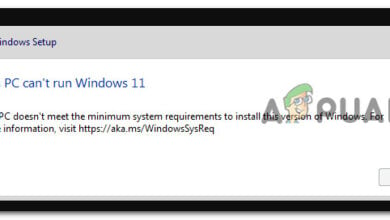Fix: VirtualBox Interface does not Allow PC to Shut Down
You may encounter the Virtual Box Interface issue while shutting down your PC if you are using an older version of the BlueStacks emulator. Moreover, improper configuration of the Task Manager priorities of the BlueStacks processes may also cause the error under discussion. The user encounters the issue when he tries to shut down his PC but could not (unless he forces the system to shut down anyway).
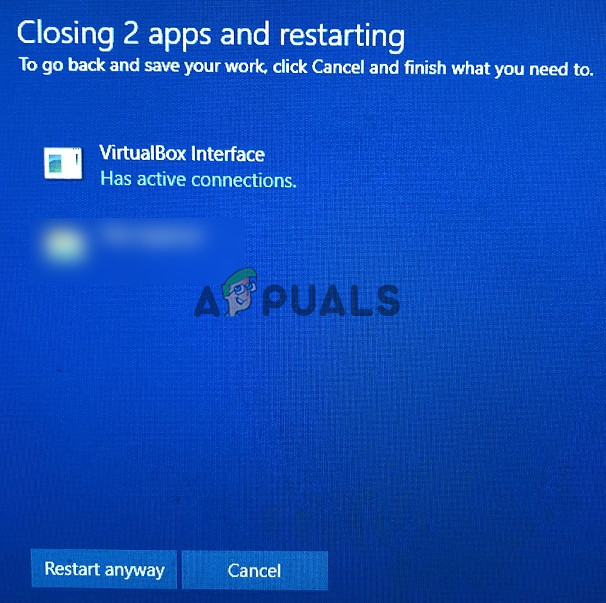
Before moving on with the solutions to close the VirtualBox Interface when shutting down the PC, make sure Notifications Mode in the BlueStacks is not enabled. Moreover, it will be a good idea to use only one instance of BlueStacks (if possible) and not for a prolonged time (if not in use). Also, if you do not have BlueStacks installed (happens rarely), then check if clean booting the system solves the problem.
Solution 1: Update or Reinstall the BlueStacks Emulator
BlueStacks are updated regularly to satiate the ever-evolving technological advancements and patch the reported bugs like the one causing the shutdown issue. In this case, updating the BlueStacks to the latest build may solve the problem.
- Launch the BlueStacks emulator and near the bottom right of the screen, click on the Gear icon to open Settings.

Open BlueStacks Settings - Now, in the left pane of the window, click on About and then click on the Check for Updates button.
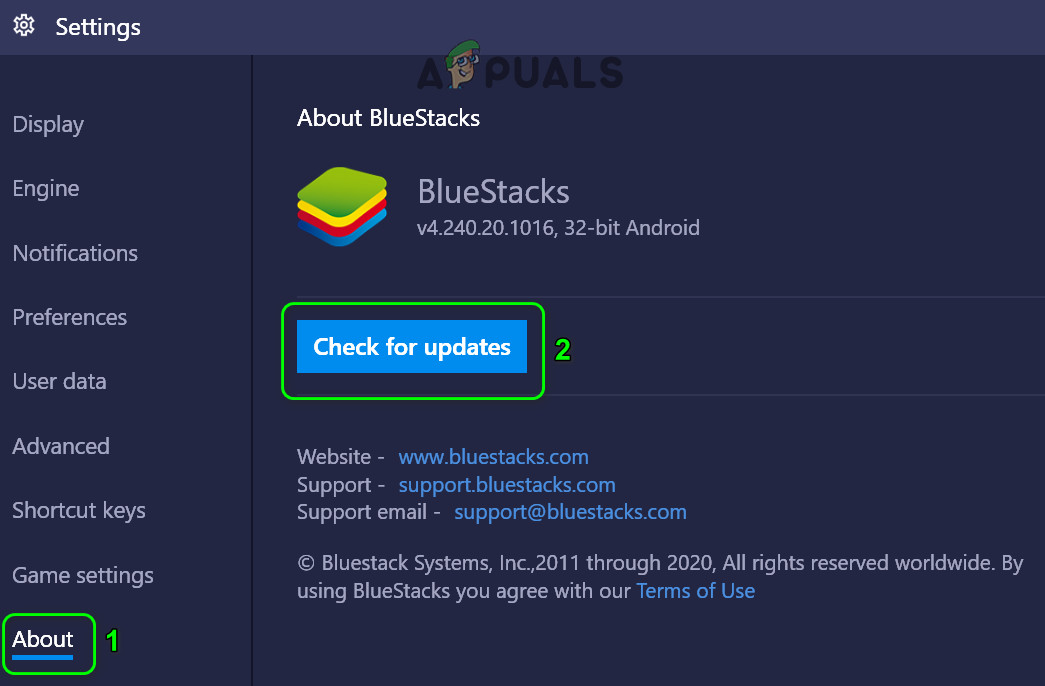
Check for Updates of BlueStacks - Then apply the updates and relaunch the emulator.
- Now close the emulator (even from the system’s tray) and then check if the shutdown issue is resolved.
If you could not update the emulator at step 2, then follow the steps below:
- Close the BlueStacks emulator and exit it from the system’s tray.
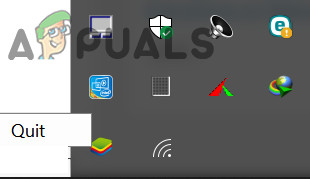
Exit the BlueStacks Through the System’s Tray - Launch a web browser and navigate to the BlueStacks website.
- Now click on the Download BlueStacks button and then wait for the completion of the download.

Download BlueStocks - Then launch the downloaded file with the administrator privileges and follow the prompts to update the current installation.
- After updating the emulator, check if the shutdown issue is resolved.
If the downloaded installer fails to update the current installation, then completely uninstall the BlueStacks emulator and then reinstall it to check if it solves the shutdown issue.
Solution 2: Kill Bluestack processes in Task Manager
BlueStacks may hinder the shutdown operation of your system if it is still operating (even in the background). In this case, completely exiting the BlueStacks emulator and using the Task Manager to forcefully close all the processes related to BlueStacks may solve the problem. And if so, then you may create a batch file to achieve the functionality.
- Right-click on the BlueStacks icon in the system’s tray and select Quit.
- Then, right-click on the Taskbar, and in the menu shown, select Task Manager.
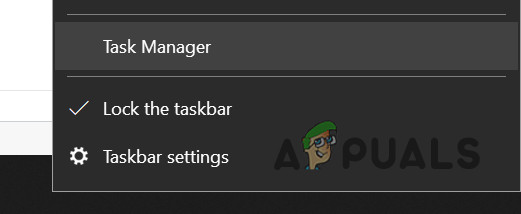
Open the Task Manager of Your System - Now make sure no process related to BlueStacks is operating there.
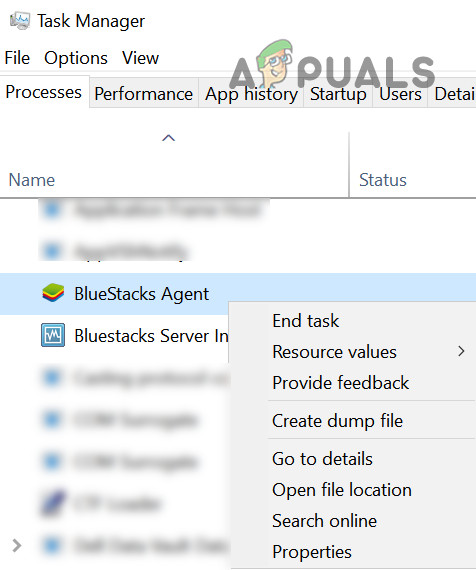
End BlueStacks Processes From the Task Manager - Then shut down your system and check if it is operating fine.
If so, then you can create a batch file and click it before shutting down the PC. Although the same functionality can be achieved by creating a shutdown task (either in the Task Scheduler or Group Policy Editor).
- Launch a text editor (e.g., Notepad) and copy the following to it.
wmic process where "name='HD-Player.exe'" delete wmic process where "name='HD-Agent.exe'" delete wmic process where "name='Bluestacks.exe'" delete wmic process where "name='Bluestacks.exe'" delete

Create a Batch File to End the BlueStacks Processes - Now click on File and choose Save As.
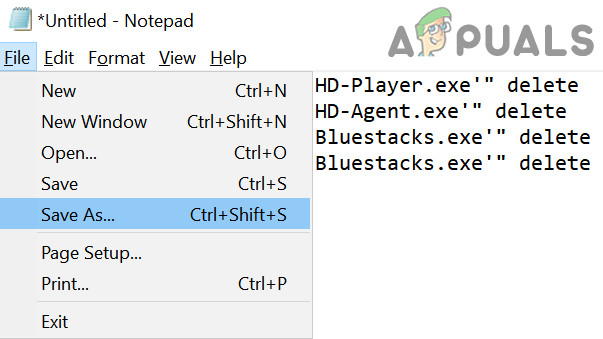
Select the Save as in the File Menu - Then change the dropdown of Save As Type to All Files and then save the file with a name having a CMD extension (e.g., Click it Before Shutting Down the PC.cmd).
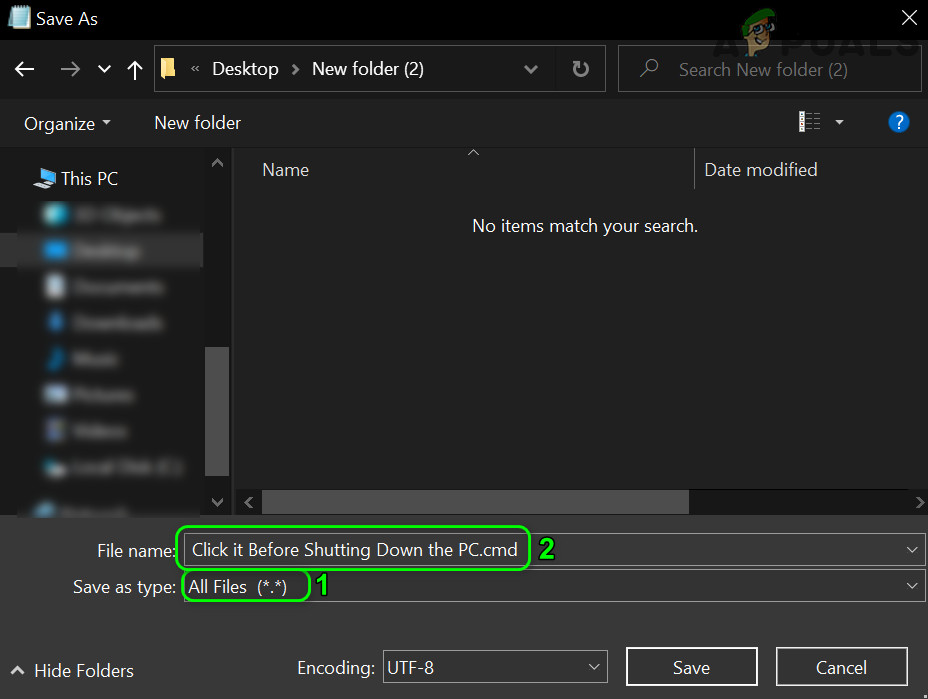
Save the Batch File With CMD Extension - Now click the file and then shut down the PC to check if the issue is resolved.
Solution 3: Change the Priorities of the Processes
Your system may fail to shut down if the priorities of the BlueStacks processes are not set properly. In this case, setting the priorities of the BlueStacks processes in the Task Manager may solve the problem.
Warning: Proceed with extreme caution as fiddling with the processes’ priorities may make your system extremely slow or unstable (especially if the priority is set to Realtime).
- Right-click on the Taskbar and choose Task Manager. Then navigate to the Details tab and right-click on HD-Player.exe.
- Now, hoover over the Set Priority option and choose RealTime.

Set the Priority of HD-Player.exe to Realtime - Then similarly, set the following priorities to the corresponding processes:
HD-Agent.exe >> above normal Bluestacks.exe >> realtime BstkSVC.exe >> realtime
- Now close the Task Manager and reboot your system to check if the issue is resolved.
- If so, then exit the emulator, even from the system’s tray.
- Then open a text editor (e.g., Notepad) and copy the following to it:
start "" /Realtime "C:\Program Files\BlueStacks\HD-Player.exe" start "" /AboveNormal "C:\Program Files\BlueStacks\HD-Agent.exe" start "" /Realtime "C:\Program Files\BlueStacks\Bluestacks.exe" start "" /Realtime "C:\Program Files\BlueStacks\BstkSVC.exe"

Start BlueStacks With the User-Defined Priorities - Now open File from the menu bar and select Save As.
- Then change the Save As Type dropdown to All Files and then enter the name of the file with the CMD extension (e.g., BlueStacks.cmd).

Save the Batch File to Launch BlueStack Through it - Now launch BlueStacks through the newly created command file and hopefully, the shutdown issue is resolved.





